





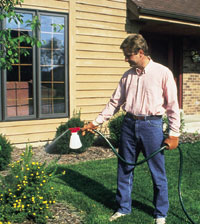 Water-soluble fertilizers delivernutrients rapidly for the shortterm.
Water-soluble fertilizers delivernutrients rapidly for the shortterm.
Fertilizer adds fresh supplies of nitrogen, phosphorus, and potassium to soil where these naturally occurring nutrients have been depleted. In areas where plants have been growing for a long time or are planted repeatedly, such as lawns, flowerbeds, and vegetable plots, the plants use up the primary nutrients over time. Plants that are expected to produce flowers or fruits continuously over an entire season use up soil nutrients faster than even the most fertile soil can provide.
Fertilizer fills the deficiencies; it's not a substitute for healthy soil. Thin, compacted soil with virtually no organic matter needs a lot of help from fertilizer if it's to do anything more than hold plants up.
Fortunately, you can reduce the amount of fertilizer you'll need in future years by amending the soil and adding organic matter every year. The resulting rich, fertile soil needs less help from fertilizer.
Look for fertilizers that are slow-acting and granular. For general use, choose those labeled "balanced" or "all-purpose." You can buy specialty products for certain groups of plants, such as lawns, roses, acid-loving trees and shrubs, bulbs, and vegetables. Their formulations are adjusted to the needs of these plant groups.
Learn more about how organic matter helps your plants.
continue reading belowContainer-grown plants require special fertilizers, because planting mixes intended for container use are typically soil-free -- lighter, disease-free, and devoid of nutrients. Unless the manufacturer chose to add slow-acting fertilizer -- an action that, fortunately, is becoming more common -- you must provide all the nutrition to your container plants, whether they are indoor or outdoor, ornamental or food.
Fertilizers are sometimes categorized as organic or synthetic. Both provide the same nutrition, but they vary in their sources of nutrients and the way the nutrients are released into the soil. The nutrients in synthetic fertilizers are manufactured from chemicals. In slow-acting products, they are coated to prevent them from immediately dissolving in water. They break down in moist soil gradually, so they are available over time to the plants. The nutrients in organic products are derived from natural plant and animal sources, such as manures, wood, paper, fish and bone meal, and seaweed. The microbes' activities in the soil release the nutrients and makes them available to the plants.
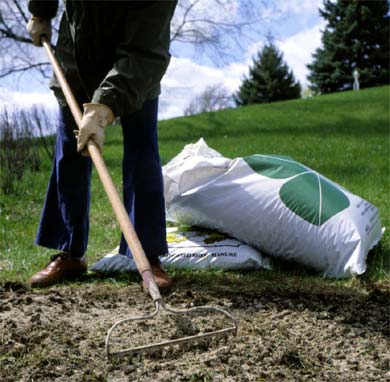 Step 1.
Step 1.
1. When preparing a new garden bed, cultivate the soil first. Sprinkle granular, slow-acting fertilizer on the soil, following label instructions, then rake it in.
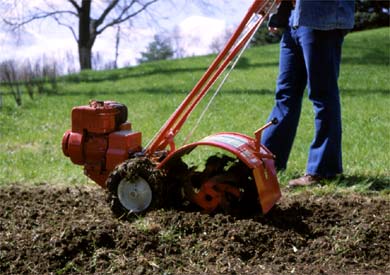 Step 2.
Step 2.
2. The action of a rototiller incorporates granular fertilizer into the soil down 4 to 6 inches. Follow label instructions for the amount of fertilizer to use.
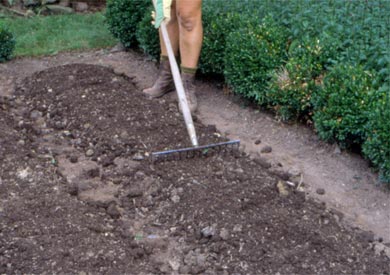 Step 3.
Step 3.
3. Spread fertilizer on beds in early spring to supply plants with uniform and consistent nutrition for up to 16 weeks -- a good main meal.
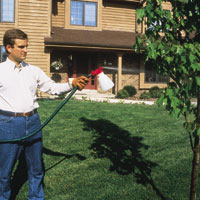 Step 4.
Step 4.
4. Follow the application of granular, slow-acting fertilizer with periodic snacks of water-soluble fertilizer. Spray it directly on foliage (foliar feeding) with a hose-end sprayer or spray bottle, to deliver a quick boost to plants about to flower or fruit. Follow label directions for dilution ratios to avoid harmful overfeeding.
Plants require three major nutrients: nitrogen (N), phosphorus (P), and potassium (K).
Follow this advice whenever you use fertilizers.
Copyright © www.100flowers.win Botanic Garden All Rights Reserved